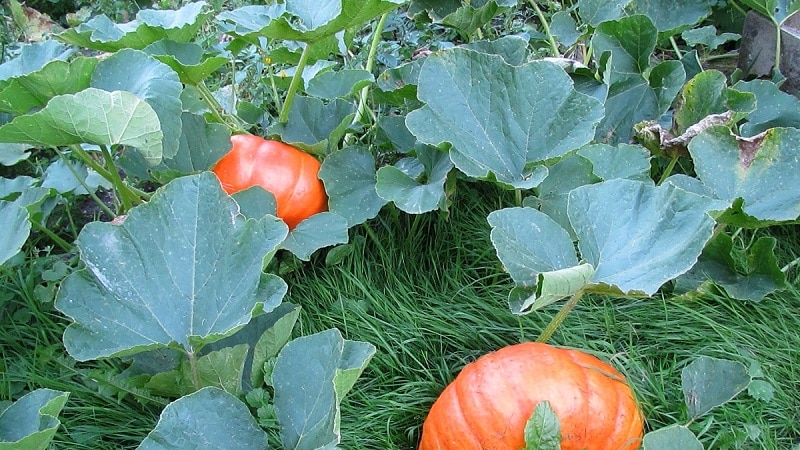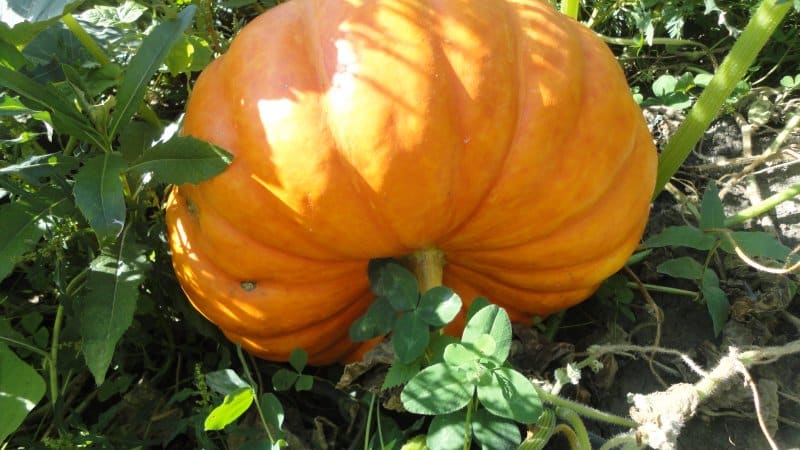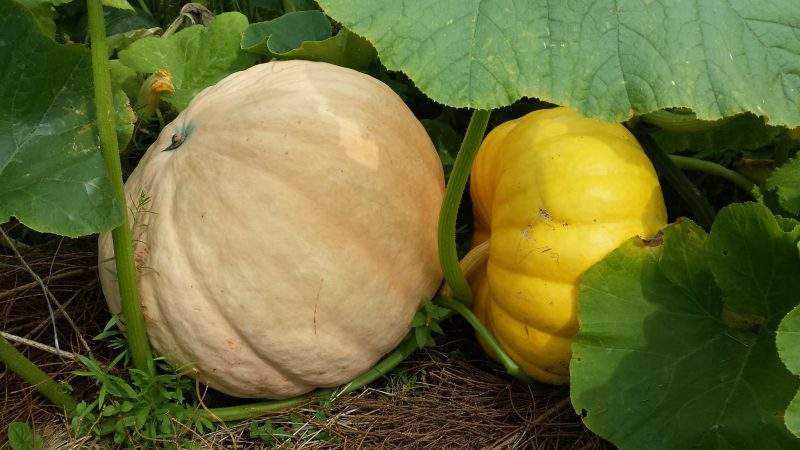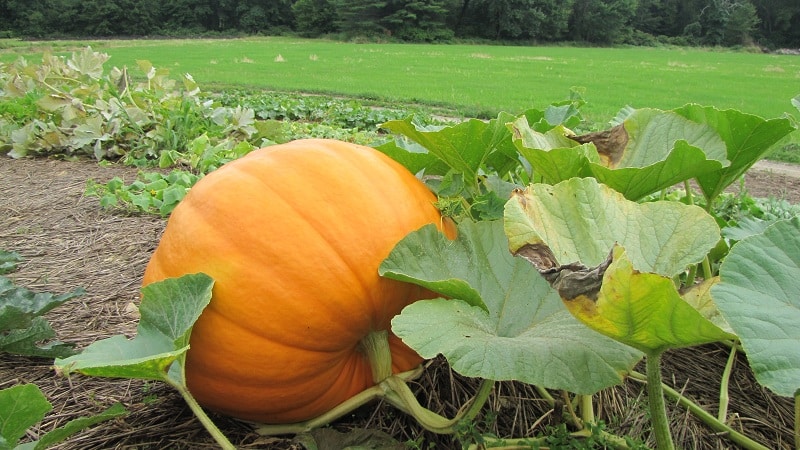When to remove a pumpkin from a garden in the Leningrad region and how to properly store it so that it does not spoil
Pumpkin grows more readily in the southern regions, as it loves warmth and light. However, with the right choice of seed material and compliance with agrotechnical rules, it is possible to grow a sweet beauty in almost any climatic conditions, with the exception, perhaps, of the Far North. For example, summer residents of the Leningrad region successfully cope with this task.
From the article you will learn when to pick a pumpkin from the garden in the Leningrad region and how to properly harvest and store the harvest.
Features of growing pumpkins in the Leningrad region
The Leningrad region is part of the North-Western region of the country, covering an area of 85.9 thousand square meters. km. The agroclimatic conditions of specific administrative regions vary (mainly depending on the position on the west-east axis), but common features can also be traced.

Weather conditions and their impact on agricultural technology
The climate of the Leningrad region is scientifically called “Atlantic-continental”. In practice, it can hardly be called favorable for growing heat-loving crops:
- moderately cold winter;
- cool, humid summer;
- long off-season - spring and autumn;
- the frequent change of marine (Atlantic) and continental, Arctic air masses creates a feeling of wind “blowing from all sides”;
- Due to cyclones, the weather in all seasons is unstable and changeable.
Reference! Despite the fact that the warm period with an average daily temperature above 0°C lasts 205-220 days (from the first ten days of April to the end of October - early November), there is a high probability of frost in late May - early June, and then in the first ten days of September.
The amount of precipitation is of great importance for pumpkin agricultural technology in St. Petersburg and the region. During the year, 550-700 mm fall in the Leningrad region. Moreover, 70% occurs during the warm period in the form of showers, thunderstorms, and often hail. This makes it difficult to grow a vegetable that does not tolerate high soil moisture.
Insufficiently fertile soils predominate in the region: sandy, loamy, soddy-podzolic. The exception is the Ordovician plateau (Volosovo, partly Lomonosov, Kingisepp and Gatchina), where the soil is relatively rich in humus, calcium and other minerals.
Based on the conditions, pumpkin agricultural technology in the Leningrad region includes the following rules:
- Early ripening vegetable varieties with a ripening period of 90-105 days are preferred. Mid- and late-ripening ones run the risk of being caught by frosts or sharp fluctuations in night and day temperatures.
- Due to poor soil conditions, the future planting site must be fertilized in advance. For example, in the fall, add complex mineral or organic fertilizers (mullein, chicken droppings). It is not advisable to do this at the beginning of the summer season, since there is a high risk of “overfeeding” the plants with nitrogen.
- Unstable spring weather forces preliminary propagation of seedlings, because... seedlings die at temperatures below 14°C. Seeds are sown in peat pots in early May and planted in the ground in the last ten days of May - early June.
- To protect plants from weather “surprises” (rain showers, hail, cold snaps at night), it is better to grow them in greenhouses, hotbeds or under film on arcs.
- In addition to shelters, soil moisture can be reduced by regular loosening, high-quality drainage, or by organizing raised beds. Watering should be rare, once every 1-2 weeks, and only with warm water.
- Pinching and trimming of excess foliage is required for normal formation of ovaries and for the fruits to receive sufficient sunlight.
- Ripening pumpkins need a dry support: plywood, pieces of siding, etc. Lying on damp and cold soil can cause them to become infected with white rot.
When to harvest pumpkins in the Leningrad region
Even if all the rules of agricultural technology are observed, untimely harvesting will lead to loss of the harvest. Frosts can significantly spoil pumpkins - such fruits do not last long. In this situation, it is better to pick the vegetables unripe and create conditions for artificial ripening.
The optimal harvest period is determined using:
- vegetative period specified by the seed manufacturer;
- external signs of pumpkin ripeness;
- weather forecasts for the end of the summer season (if frosts and precipitation are not expected, there is no need to rush);
- lunar calendar.
Attention! Frosts and prolonged rains have an adverse effect on the keeping quality of pumpkins.
How to tell if a pumpkin is ripe

A number of external signs will help you most reliably determine the maturity of a vegetable:
- The stalk dries out, becomes woody and hard to the touch, and is easily separated from the stem.
- The leaves fade, turn yellow in places or dry out.
- The color of the fruit peel acquires a bright, rich color. It can be different: bright orange, green, grayish - depending on the variety.
- The peel acquires a denser and harder structure and a more clearly defined texture pattern (longitudinal stripes).
In addition to the above, experienced gardeners use such signs as:
- absence of a fingernail mark if you run it along the peel of a vegetable;
- feeling of hardness when pressing with fingers;
- matte coating on the peel;
- dull sound when tapped.
Reference! In the northern regions, including the Leningrad region, harvesting begins in the second half of August. The pumpkin is completely harvested around September 15th. However, the timing depends on the meteorological conditions of a particular year.
Harvesting time depending on variety
Traditionally, according to the length of the growing season, varieties of early-ripening, mid-ripening and late-ripening pumpkin are distinguished.
- An early ripe vegetable is ready for harvesting 90-105 days after the formation of the first shoots, i.e. around August. As a rule, such varieties produce relatively small fruits (from 2 to 7 kg) and are resistant to diseases. The main disadvantage of early-ripening pumpkin is that it cannot be stored for longer than a month.
- Mid-season varieties ripen within 120 days. Accordingly, the harvest time is shifted to September. You can store this vegetable all winter.
- Late-ripening varieties are usually represented by giant pumpkins. It will take up to 200 days to grow a vegetable the size of Cinderella's carriage. Cultivating such pumpkins in the climate of the Leningrad region is very risky - if the soil freezes, the harvest will be spoiled.
Reference! The Kolobok variety grows from the first shoots to full ripening in 90-102 days. It got its name due to the round shape of the fruit weighing 4-7 kg. Valued for its sweet pulp, rich in sugars and carotene, and thin skin. The compact bush gives high yield - about 14 kg/sq. m.
Cleaning according to the lunar calendar

Belief in the influence of the phases of the moon on the development of plants is based on the doctrine of cyclical processes in the body of any living creature.
Attention! It is up to everyone to decide whether to follow these instructions. Great doubts are raised by numerous publications that contradict each other in indicating different states of the moon on the same day. To avoid getting into trouble, choose a reputable source.
Days when the moon is in the constellation are considered favorable for harvesting fruits, including pumpkins:
- Gemini (in the waning phase);
- Scorpio (during the growing phase);
- at any phase in Sagittarius, Capricorn and Aquarius.
Pumpkin picking rules
Having decided on the timing of the harvest, it is important to follow the procedure correctly:
- Choose a dry, moderately warm day.
- Leave 3-4 cm of the stalk so that various infections do not get into the fruit separated from the mother stem.
- Try not to damage the fruits. If a crack or scratch does form on the crust, cover it with a bactericidal plaster.
- Sort vegetables according to maturity and integrity. Unripe ones should be sent for ripening, damaged ones should be eaten as soon as possible.
Important! Pay special attention to inspecting the plant for various diseases. If there are traces of rot, bacteriosis or mosaic on the fruit or tops, the vegetables cannot be stored for long. Moreover, they should not be used as a source of planting seeds.
Ripening
It happens that weather conditions do not allow the fruits to be left on the vines and bushes until fully ripe. In this case, the best way out is ripening, that is, bringing until ripeness in artificial conditions.
The pumpkin will mature in a warm, dark, well-ventilated room.Many summer residents advise putting fruits under the bed. In 1.5-2 months, the pulp will gain sweetness, and the concentration of sugars, vitamins and carotene will increase.
How to store the harvest
It is not possible to eat the entire pumpkin harvest in a day or two, since the vegetable is quite large. In addition, the plant, rich in vitamins, will add useful variety to the winter-spring diet. So the question is how preserve the fruits as long as possible worries many gardeners.
Optimal conditions
General rules for storing pumpkin:
- temperature limits +5…+15°С;
- air humidity no more than 65-75%;
- lack of direct sunlight;
- good room ventilation.
Attention! Dampness negatively affects the keeping quality of vegetables, so traditional unheated basements and cellars - not the best option for storing them.
Fruits should not lie on the floor; it is better to place them on shelves or spread straw, hay or tarpaulin. Place the pumpkins so that their sides do not touch, with the stems facing up.
Shelf life

If the storage area is properly organized, the pumpkin does not deteriorate and does not lose its taste for several months.
Remember that early varieties are intended to be consumed within a month. And don’t delude yourself about thick-skinned varieties: seeds can germinate inside the chamber and take sugars from the pulp of the vegetable itself. Butternut squash has the greatest shelf life.
The safest way to preserve pumpkin until next season is to peel, chop and freeze. Frozen vegetables stay fresh in the freezer for up to 70 weeks.
Dried pumpkin has no shorter shelf life. It is stored in linen bags for 12-18 months.
Attention! The pumpkin can be pre-cut into segments, seeds removed, wrapped in plastic wrap and stored in the refrigerator for up to two weeks. This is a convenient option if the vegetable is regularly present in dishes.
Conclusion
Growing pumpkins in your summer cottage is not only interesting, but also profitable. Thanks to its impressive size, the vegetable is enough to prepare several dishes or a meal for a large family.
To successfully grow pumpkin, take into account the agroclimatic conditions of the region. Thus, the short, humid and not too hot summer of the Leningrad region forces gardeners to grow pumpkin seedlings and under cover. Most often, early ripening varieties are used - the rest, most likely, will not have time to ripen under natural conditions and will have to be sent to ripening.